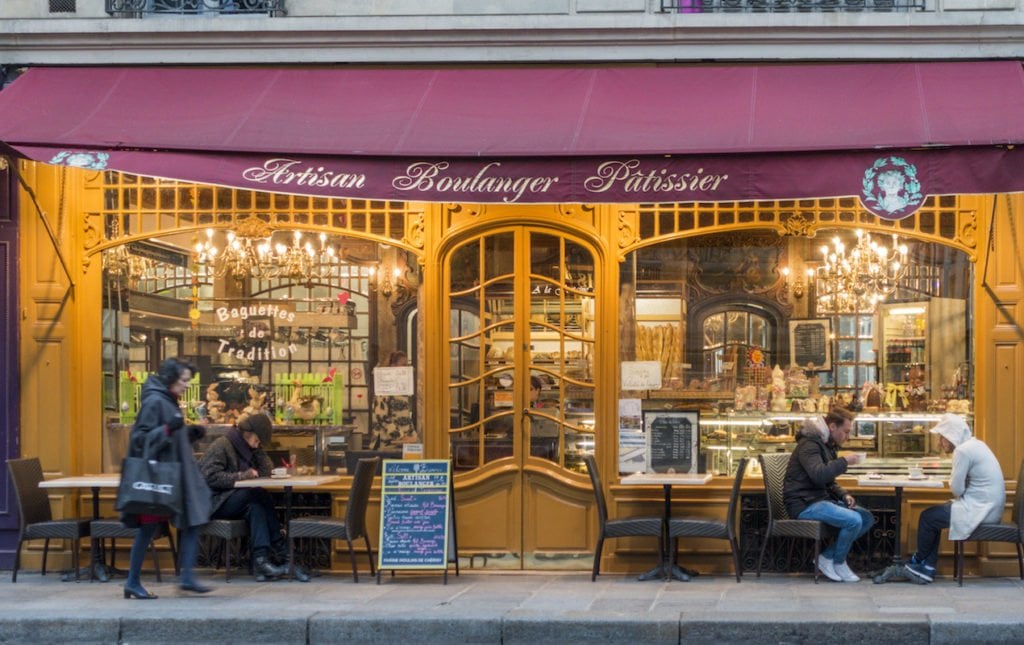
Visiting Paris without sampling all the delicious offerings at a boulangerie or pâtisserie would be a crime against humanity. Paris wouldn’t be Paris without its bakeries and pastry shops; they’re a necessity of French life. But knowing how to order at a French bakery can be intimidating.
How to order at a French Bakery
This guide will help you know what to order and how to order in a French bakery. We’ll show you how to build a basic phrase in French, how to pronounce tricky words and tell you all about each item. For example: how to order a well-done baguette vs. a softer one; how to get a loaf of bread sliced; and the difference between a regular and a traditional baguette. There’s lots to learn, so put on your thinking caps, and let’s parle Français!
The Very Basics
First things first–learn how to say hello at the very least. The rest you can manage through pointing and holding up fingers, and if you’re lucky, the store clerk will understand English. But, just in case you want to try to form a complete sentence, here are the most basic words you’ll need to order in a French bakery.
- Bonjour (Bon-joor, with nasal “n”, soft “j”, and throaty “r”) – Hello
- Je prend (juh prahn) – I’ll have or I’ll take
- un (ahn, with nasal ‘n’) – one, for masculine nouns
- une (oon) – one, for feminine nouns
- deux (duh) – two
- trois (twa) – three
- quatre (catt) – four
- cinq (sank) – five
- s’il vous plaît (seal voo play) – please, or literally “if it pleases you”
You might even want to purchase a travel French phrase book to practice with ahead of your trip. Don’t forget to pack it in your bag and have your French phrase book at the ready. And if you really want to dive in to the French language, you can even purchase an online French language learning program like Rosetta Stone.
The Most Common Items
Below is a list of the items you’ll find at every single boulangerie in Paris, and the ones you’re most likely to order at some point. There are pronunciations, sample phrases and when applicable, variations or modifications of the item that you may find useful (such as flavors, sliced, well-done, etc).
If you’d like to actually hear what the pronunciations sound like, Google Translate has a wonderful tool. Just select French, copy and paste the phrase you want to hear, then click the little speaker icon in the bottom corner. A lovely robotic computer voice will then pronounce the phrase for you.
Baguette
- Pronunciation: Ba-GETT
- Sample Phrase: Je prend une baguette, s’il vous plaît. I’ll have a baguette please.
- Variations: normal or tradition. Bien-cuite or pas trop cuite.
The baguette is a staple of French life. They’re long, quite tough on the outside and would make a decent weapon in a pinch. There are a few different things to know about baguettes: 1) always go for the baguette tradition, that is, a baguette that’s been made with minimal ingredients and therefore is more old-fashioned and pure. The other variation, the baguette classique or baguette normal, has some additives, so it may last longer before becoming too hard to eat. Try both if you wish to see what you prefer.
Another note on baguettes. If you prefer a well done stick of bread, you’d say “une bagette bien cuite,” (bee-ahn kweet). And if you’d prefer a softer baton of carbs that’s easier on the teeth, ask for “une baguette pas trop cuite,” (pah trow kweet).
Pain de Campagne & Other Bread Loaves
- Pronunciation: pan duh com-PAN-yuh
- Sample Phrase: Je prend un pain de campagne tranché, s’il vous plaît. I’ll have a loaf of country bread sliced please.
- Modifications: Tranché (trahn-shay) – sliced
There are various different terms that translate into a loaf of bread depending on the flour, grains, dough, shape and size, but the most basic word for bread is pain, pronounced like ‘pan’ with a nasal ‘n’. Your best bet is to try to read the labels on the bread display, or do a lot of pointing and gesturing. Here are some of the most common bread loaves to order in a French bakery:
- pain de campagne (pan duh cam-PAN-yuh) – a thick-crusted loaf made with both wheat and white flour, usually oval in shape
- pain de mie (pan duh mee) – small rectangular loaf of wheat bread
- pain au levain (pan oh luh-van) – sourdough
- pain aux céréales (pan oh sair-ay-all) – small rustic loaf with seeds and whole grains
Croissant
- Pronunciation: Kwah-sahn
- Sample Phrase: Je prend deux croissants, s’il vous plaît. I’ll have two croissants please.
- Variations: Un croissant aux amandes / au beurre. Almond croissant / extra buttery croissant
Ahh, the flaky, buttery, layered, crescent-shaped slice of heaven that is a croissant. If the boulangerie you’re in offers two different types of plain croissants, do yourself a favor and go for the one called croissant au beurre. This type is made with even more butter and is therefore all the more delicious.
The French are generally purists when it comes to their food and language, so you will hardly ever see a croissant filled with anything, the only exceptions being the pain au chocolat (below) and the croissant aux amandes, the sweet almond croissant, filled with almond cream and encrusted with almond slices and powdered sugar. Think of it as a bear claw but much, much better. Also, croissant sandwiches aren’t popular in France, possibly because the French categorize them more as a sweet pastry, or viennoiserie, than a bread.
Pain au Chocolat & Other Viennoiserie
- Pronunciation: pan oh shock-o-lah
- Sample Phrase: Je prend un pain au chocolat, s’il vous plaît. I’ll have a chocolate croissant please.
- Variations: Chocolatine, used in some southern regions of France.
One particular order at a French bakery can be confusing. Some would argue that a pain au chocolat (literally translated chocolate bread) is the same thing as a chocolate croissant, so why isn’t it called that in French? In fact, in the past, the dough they used to make pain au chocolat was much more bread-like, not as flaky as the modern croissant. You’ll find lots of variation among different bakers in France, some use actual croissant dough (it probably makes the baking process a bit more efficient), while others are more old fashioned and use a denser, less airy dough.
The term Viennoiserie describes carb-a-licious treats that fall somewhere between bread and pastries – that includes the croissant and pain au chocolat, but also these wonderful friends below:
- Chausson aux pommes (show-sone oh pumm) – a “slipper” filled with apple compote
- Pain aux raisins (pan oh ray-zan) – spiral shaped with raisins
- Pain au lait (pan oh lay) – fluffy little bread pieces that are usually plain – kids love them with Nutella.
- Brioche (bree-oh-shh) – fluffy yeast bread sometimes filled with bits of things like chocolate or raisins.
- Chouquette (shoo-kett) – bite-sized puff pastries topped with large sugar crystals.
Quiche
- Pronunciation: keesh
- Sample Phrase: Je prend une quiche lorraine s’il vous plaît. I’ll take a ham and cheese quiche please.
- Variations: Various flavors
A quiche is a savory tart or flan that is typically filled with meat, cheese and/or vegetables. The most common type of quiche in France is the Quiche Lorraine, which is filled with lardons (bits of soft bacon) and gruyère cheese. There are tons of different possibilities, however, like poulet poireaux (chicken and leek), thon, tomate et fromage (tuna, tomato and cheese), saumon fumé (smoked salmon) and the list goes on. We suggest buying a couple different small quiches so you can try out different flavors.
Macaron
- Pronunciation: mack-ah-ron, with a nasal “n”
- Sample Phrase: Je prend une boîte de macarons, s’il vous plaît. I’ll have a box of macarons please.
- Variations: Various flavors are placed after “macaron”
Don’t make the mistake of referring to macarons as “cookies.” It can be seen as an insult to the French. These come in various flavors and colors, so when you want a lemon macaron, you’d say macaron citron. You always put the flavor after the noun. Most likely you’ll be ordering a box of macarons at Ladurée or Pierre Hermé, and in that case, all the shop workers there speak English, so don’t worry about trying to speak French.
Éclair
- Pronunciation: aye-Claire, just like the girls’ name
- Sample Phrase: Je prend un éclair au chocolat, s’il vous plaît. I’ll have a chocolate eclair please.
- Variations: Various flavors are placed after “éclair”
French éclairs are nothing like the gigantic, overstuffed American éclair. Think of them as simply a elongated cream puffs (choux, in French). The most common flavors are chocolate, coffee, caramel, vanilla and pistachio, but specialty shops like Éclair de Génie have really elaborate, unusual flavors, so just read the labels or make good use of your pointer finger. Just like with macarons, the flavor always goes after éclair.
Tarte au Fraises / Framboises / Citron
- Pronunciation: tart oh frehz / frahm-bwaz / see-trown
- Sample Phrase: Je prend une tarte au fraises, s’il vous plaît. I’ll have a strawberry tart please.
- Variations: flavor always goes after “tarte”
When you combine the talents of French bakers with the perfectly ripe and flavorful fruit of Europe, you get one of these delicious sweet treats. The most common fruit tartes you’ll find in France are strawberry, raspberry and lemon. The fruit quality in France is generally superior to the USA. Their strawberries are out of this world when in season, so expect a lot of real fruit flavor, not just sugar.
French boulangeries and pâtisseries offer up hundreds of different varieties of goodies, so this list is nowhere near exhaustive. But now you know the basics of how to order at a French bakery. For a list of even more specialty pastries, see this blog post: Pretty Pastries of Paris – the Seven Best Sweets to Sample!
Are you ready to live like a local with Paris Perfect? Click here to browse all of the beautiful apartment choices! Call 1-888-520-2087 from the USA or email [email protected] for our apartment reservation team.
This article contains affiliate links. When you make a purchase through our affiliate partner sites, we earn a small commission at no additional cost to you.
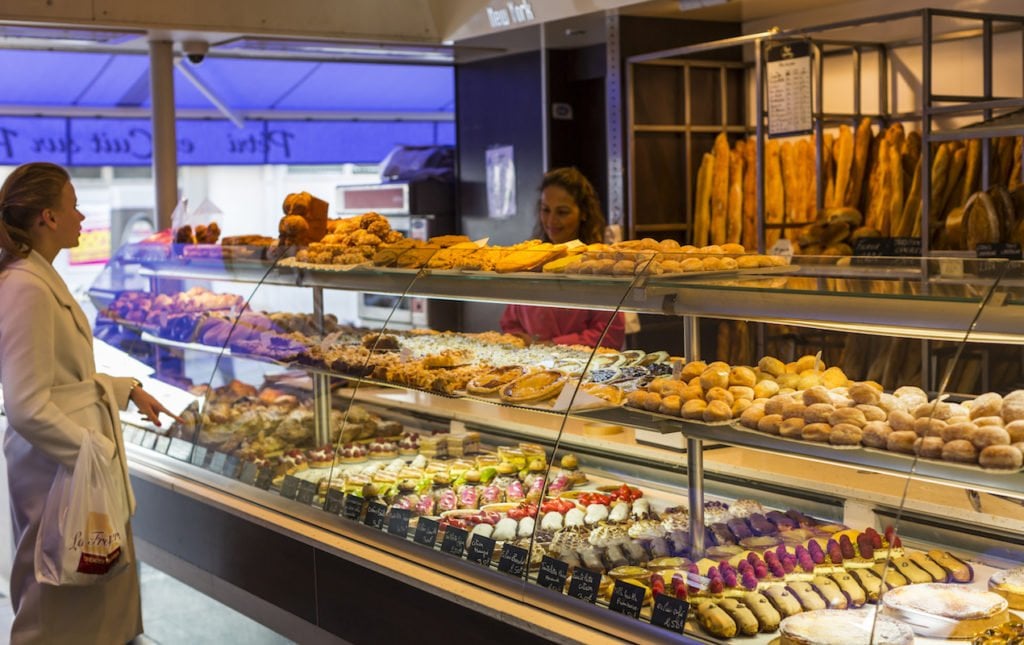
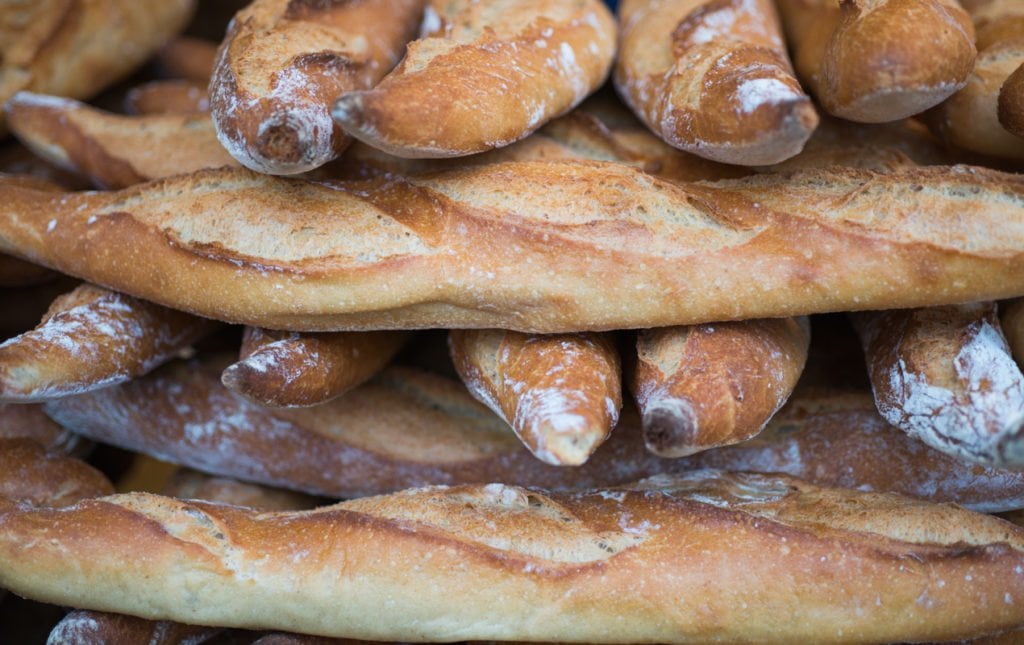
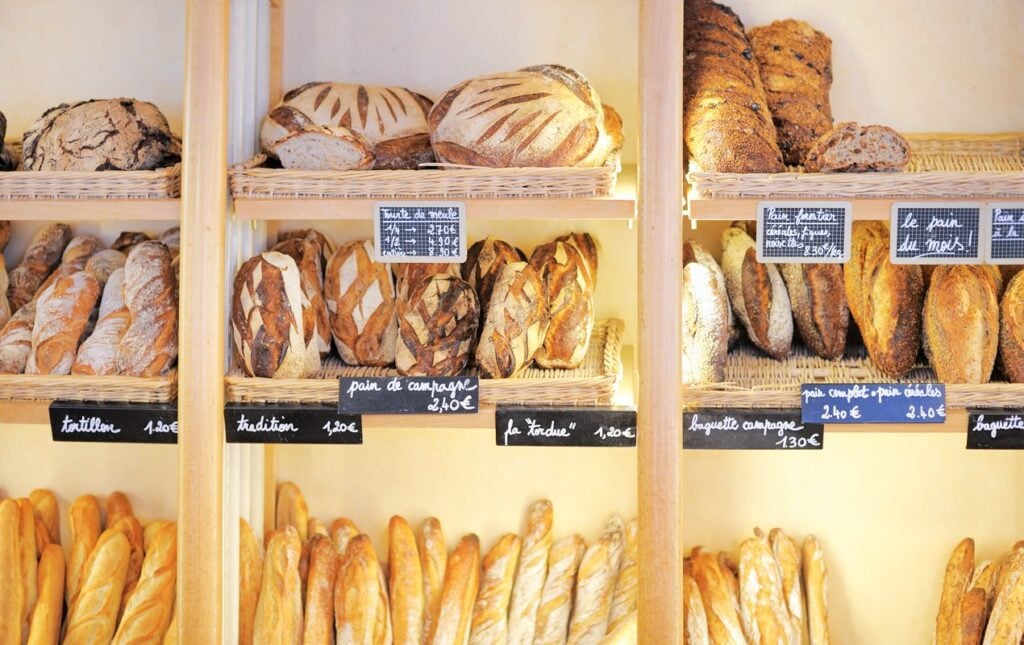
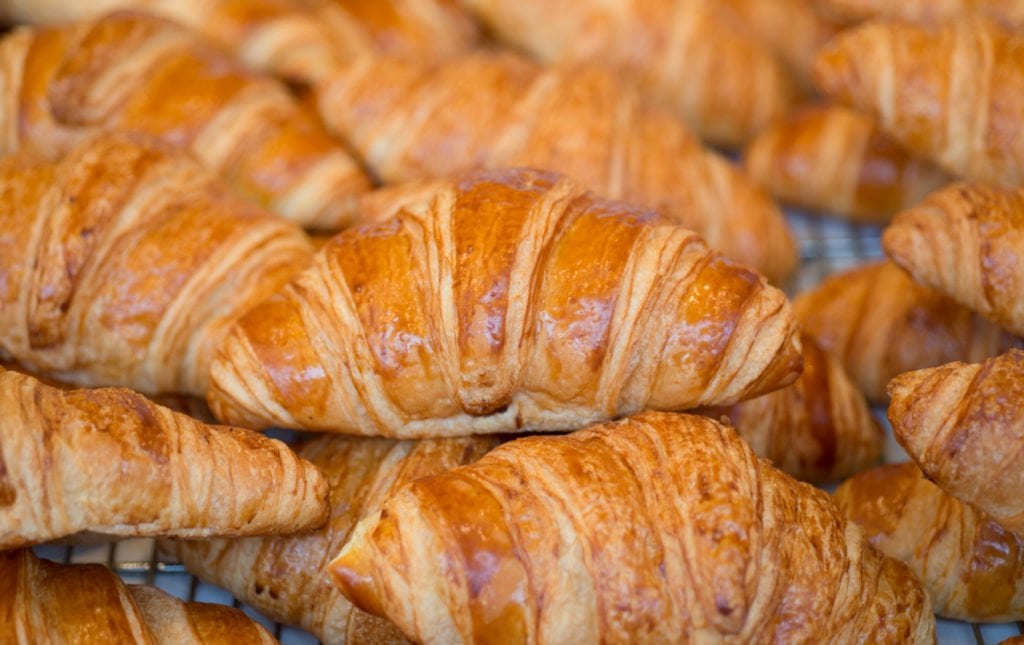
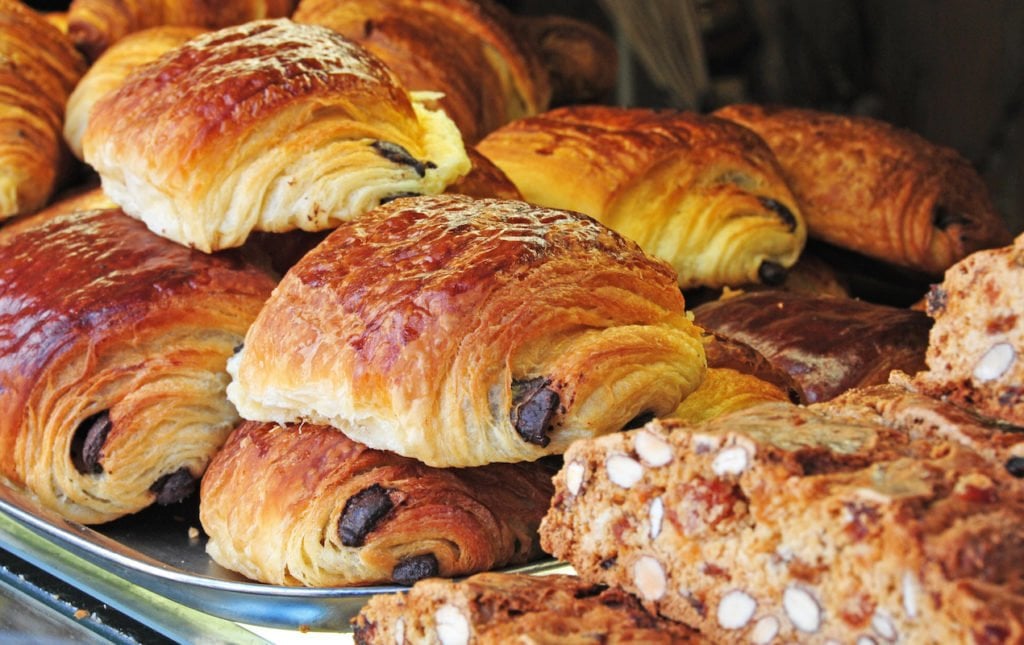
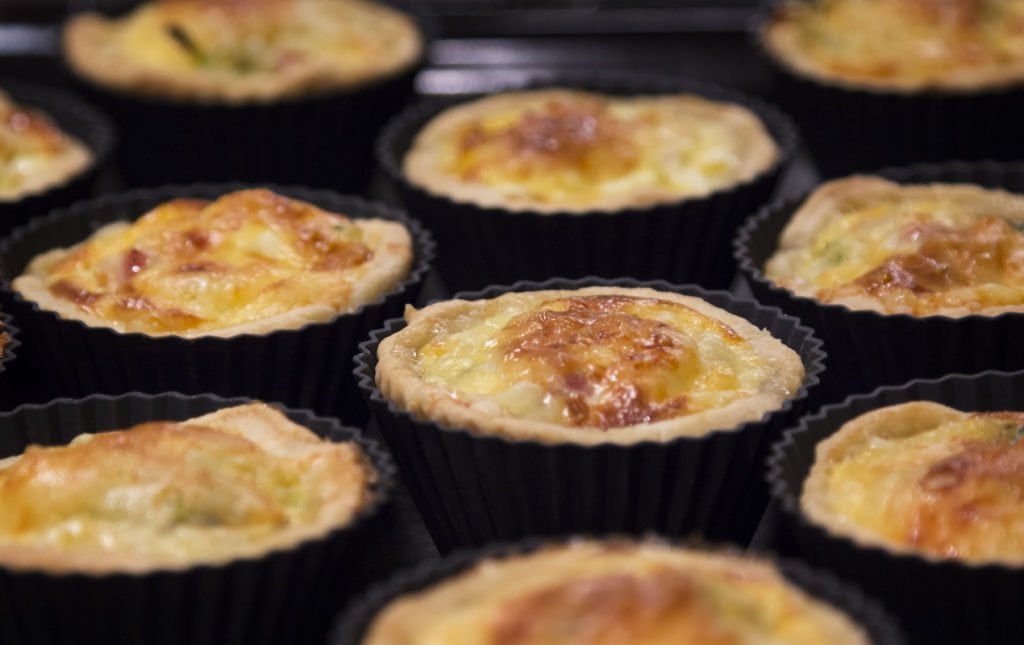
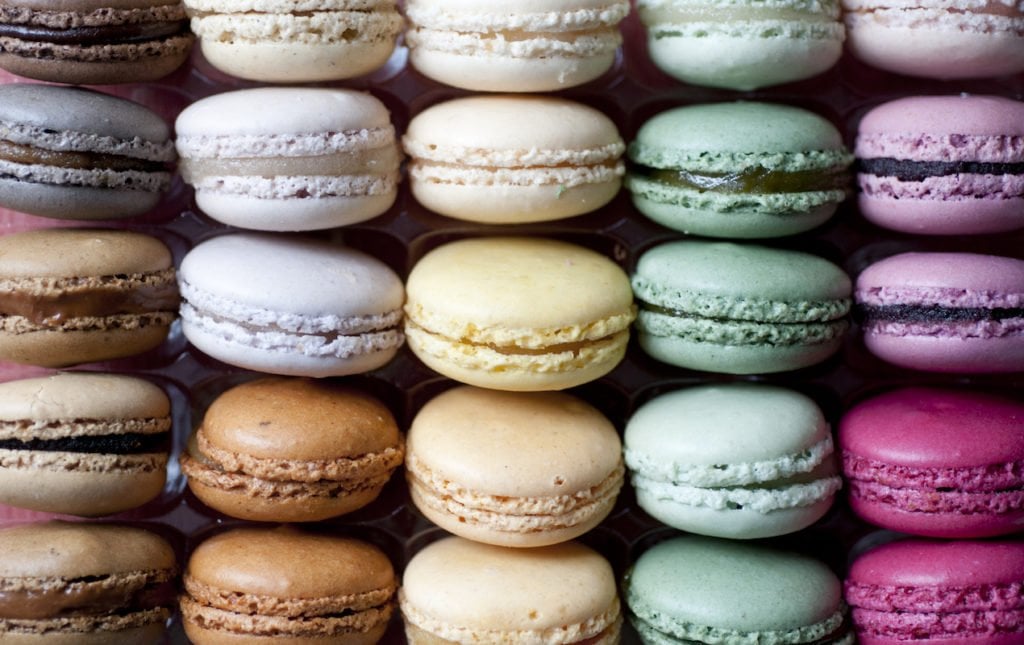
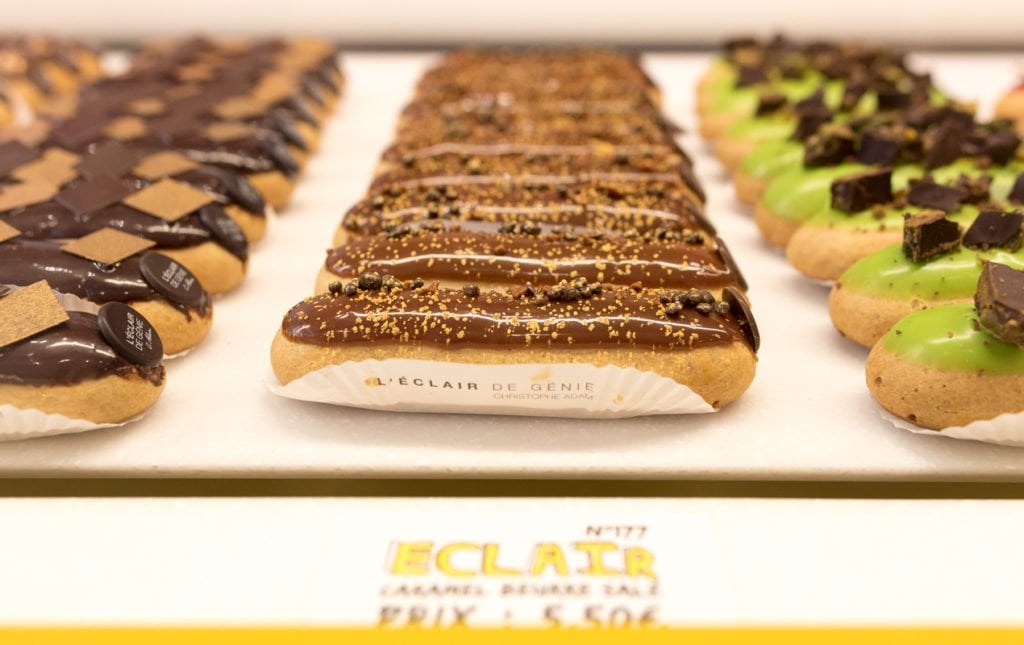
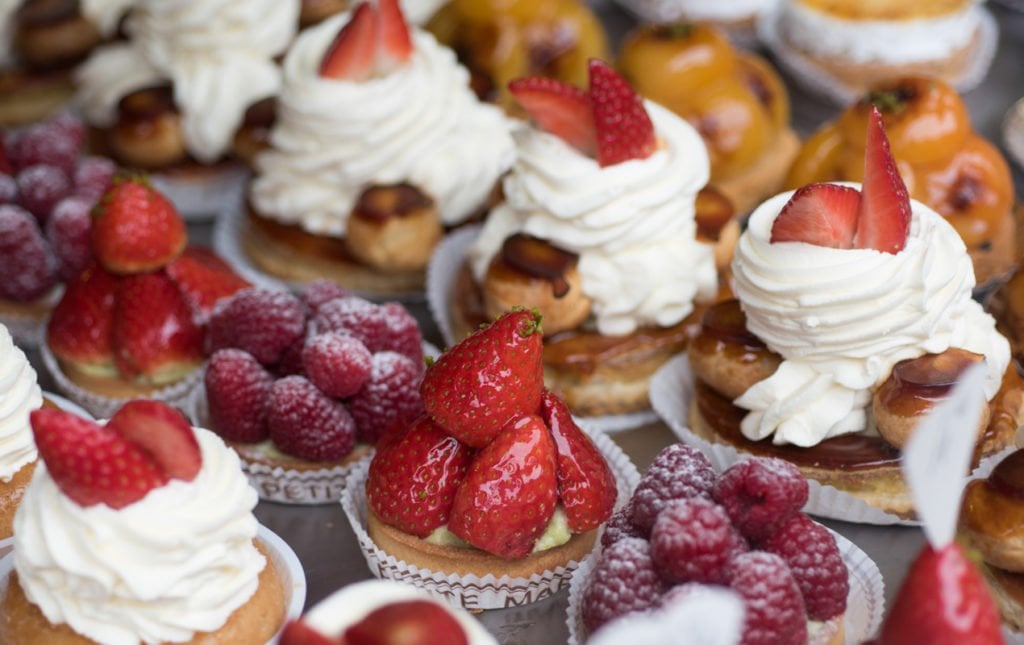
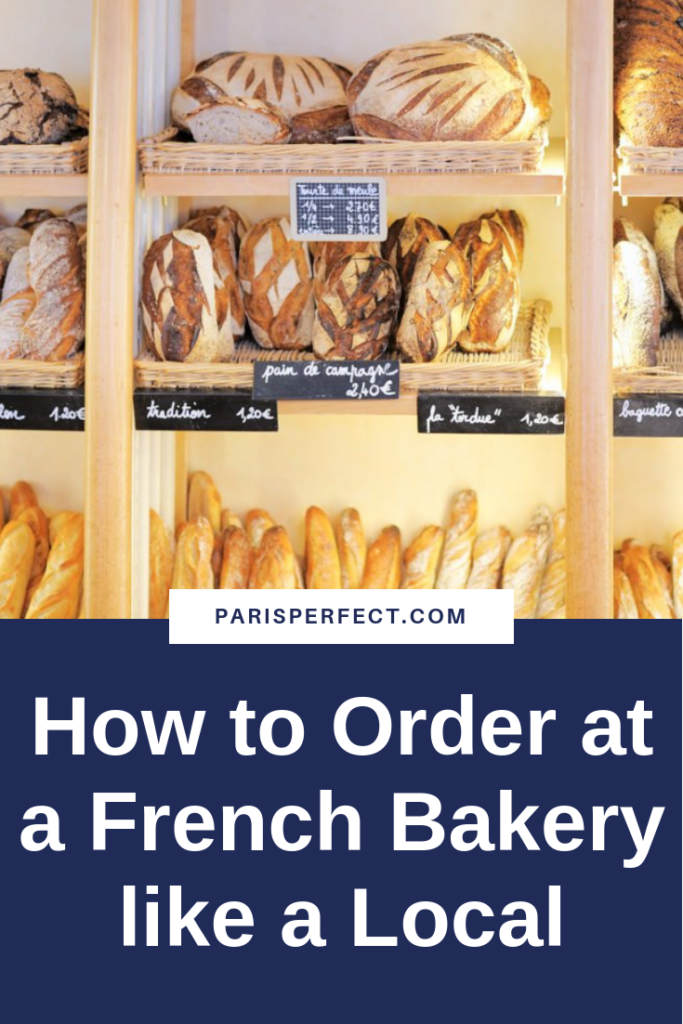



oh, this is super helpful. I am spending a long weekend in Paris in December (my first time!!) and have been worried about my college French deserting me when I try to order food. Seriously, I’m more worried about that than I am any other travel mishaps. I’m going to make good use of the phrases in this post!
I think I just gained 10 pounds of goodness.
That éclair looks heavenly!!
Thanks for sharing!
Not today, diet!
That tarte au fraises is about to make me google where i can find it in my neighborhood right now!
Thanks for the read!
Kiki
You’ll get a nice bit of healthy strawberries with the tarte au fraises. 🙂
Thank you! V. helpful
This is a super guide – photos are perfect and the pronunciation guide very helpful.
Merci!
Just a note… tarte au fraises should be written tarte aux fraises (with an x)
Helpful guide, merci bien.
Je prends, not je prend, is the correct spelling. Je prends, tu prends, il/elle/on prend, etc.
It’s also fine just to say “Une baguette, s’il vous plaît.”
You wouldn’t really say “je prends” which is not “I’ll take” but literally “I take” .
It would be more correct to say “je prendrais…” or even better “je vais prendre” 🙂
Bonne dégustation
Useful, too, is to understand when you are asked, “Avec ce-ci?” …”Anything else?” (literally, “with that?”) Then you either add to your order, or if done, reply “C’est tout, merci.” –“That’s all, thank you.”
Thanks that was helpful, as we’re planning to visit France .
Going to Paris in June so this is so helpful, Thankyou!